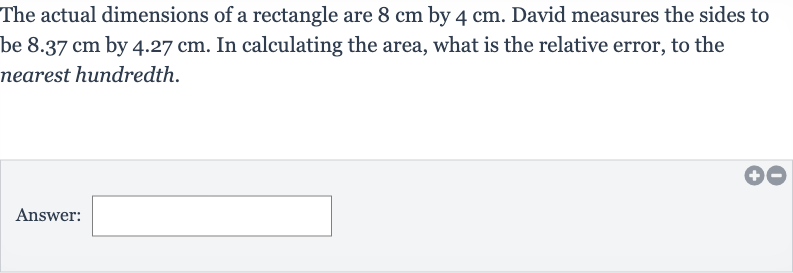Full solution
Q. The actual dimensions of a rectangle are by . David measures the sides to be by . In calculating the area, what is the relative error, to the nearest hundredth.Answer:
- Calculate Actual Area: Calculate the actual area of the rectangle using the actual dimensions.Actual area = Actual area = Actual area =
- Calculate Measured Area: Calculate the measured area of the rectangle using the measured dimensions.Measured area = Measured area = Measured area =
- Calculate Absolute Error: Calculate the absolute error by subtracting the actual area from the measured area.Absolute error = Absolute error = Absolute error =
- Calculate Relative Error: Calculate the relative error by dividing the absolute error by the actual area and then multiplying by to get the percentage.Relative error = Relative error = Relative error = Relative error = .\%
- Round Relative Error: Round the relative error to the nearest hundredth.Relative error (rounded) =
More problems from Percent error: word problems
QuestionGet tutor help
QuestionGet tutor help
QuestionGet tutor help
QuestionGet tutor help
QuestionGet tutor help
QuestionGet tutor help
QuestionGet tutor help
QuestionGet tutor help
QuestionGet tutor help

